Does Washing Machine Spin Speed Matter When Washing Laundry?
First things first: What does the washing machine spin speed do?
The spin cycle comes at the end of the wash to remove as much excess water as possible. The cycle speed is the difference between damp laundry and less damp laundry. This affects the drying time on the washing line and in the tumble dryer.
Damp and less damp, is that really the only difference?
Well, in most cases, yes.
Does the washer spin speed really matter, then?
Yes it does, but usually only when it comes to the type of fabric washed.
Let’s take a closer look
Spin speed is measured in revolutions per minute (RPM). The higher the spin RPM on a washing machine the faster the drum turns and the drier the clothes at the end of the cycle.
The drier the clothes come out of the machine, the faster they dry on the line and in the tumble dryer.
There are 1800 spin speed washing machines on the market – turning 1800 times per minute! The most common, however, are 1400 spin speed washing machines.
The lowest washing machine RPM speed is 400. If you’re washing a normal load, it doesn’t make sense to go down to 400RPM as your clothes will come out damper than is ideal. But, this setting is perfect for delicate fabrics, particularly silk.
Spinning silk at high speeds can damage the fabric, weakening it so it tears easily.
More robust fabrics, including cotton, wool, and denim can withstand much higher speeds, going up to 1400 (or 1800) to really wring them dry
Bear in mind that higher speeds are more ‘violent’ and your clothes may come out creased as a result. This is particularly true for cotton work or dress shirts and blouses. So, while high speeds are good for cotton fabrics, it’s not necessarily best for your smart clothes. Unless, that is, you love ironing. If you love ironing then by all means spin the bejesus out of your washing.
Selecting washing machine spin speed
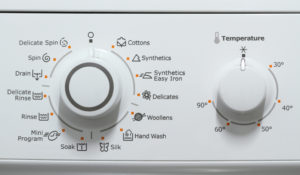
You generally don’t have to figure which is the best spin speed for your washing machine because it is preset with particular cycles.
So, if you are washing a load of delicates and you select the ‘Delicate’ setting, your washer will automatically go to 400RPM.
If you’re washing blankets and towels and you select the correct setting, your washer will automatically go to the 1000RPM to 1800RPM range.
You can change the setting if you so choose. For example, if you’re stuck for time and want a quick wash, the setting might go the mid-RPM range. But if your load is mostly towels then you can change it to a faster speed.
Does the washing machine spin speed really, truly, absolutely matter?
Not when it comes to the high spin speed range: 1200RPM to 1600RPM.
According to Peter Tyson, washing machine manufacturers are pulling a tiny bit of wool over our eyes.
You see, most washing machines are made with the same kind of motor with the same speed controls. The difference is that the motors of washers sold with lower RPM are designed to cut-off the speed at the chosen maximum point.
If we assume that motors go up to 1600RPM but the washer is sold as a 1200RPM model, then the motor is disabled beyond that point.
Basically, the production costs for various models with various maximum speeds are pretty much the same across the board. The trick is that high speeds are considered an extra feature and so manufacturers charge more for those washers.
In point of fact, the higher price is based on perceived value. We the public think that price indicates value and quality. We expect to pay more for high RPM models than low RPM models. If a brand charged much the same for low and high models, we’d be suspicious of the quality.
So, essentially, consumers dictate that:
- We pay more for a 1200RPM model than a 1000RPM model.
- We pay more for a 1400RPM model than a 1200Rpm model.
You can imagine the mark-up on an 1800RPM model.
Two other things that Tyson reckons consumers should be aware of when it comes to washing machine spin speeds:
- Your expensive highest spin speed washing machine might not hit its top speed at all. It can depend on the size and balance of the load. So you have to get it exactly right to benefit from all 1800 rotations per minute.
- If your washer does hit its highest speed, it might maintain it for only 30 seconds. So your high speed washer builds up speed, hits top speed, and immediately winds back down.
You might as well save yourself a couple of hundred Pounds and go for a somewhat slower model.
This is where we get back to damp and less damp
In a separate article, Tyson refers to a comparison between spin speeds and the effect on drying speed and energy used. The comparison uses a 6kg drum size and an A-rated condenser tumble dryer. Let’s look at the table.
| SPIN SPEED | RESIDUAL DAMPNESS | ENERGY USED TO TUMBLE DRY |
| 800 | 70% | 4 kWh |
| 1000 | 60% | 3.7 kWh |
| 1200 | 53% | 3.3 kWh |
| 1400 | 50% | 3.1 kWh |
| 1800 | 42% | 2.6 kWh |
Let’s look at the three highest speeds. In terms of residual dampness and energy used to tumble dry their performance is very similar. There is a fair difference between the performance of 1400 and 1800 speeds but the gap is twice as big as any of the other measurements. It’s still possible to say that the difference between the two is not so great as to justify extra costs.
Also, Tyson points out that while you might think that 1800RPM is the bee’s knees, washing machines aren’t necessarily built to cope with the powerful action. According to Tyson, regardless of the size of the motor and spin speed, things like the suspension and bearings are the same. So the faster the spin, the more pressure is put on these components, and the likelier damage will occur.
In the end
It isn’t necessary to get the highest RPM washing machine to get the best results. Mid-range speeds of 1200RPM and 1400RPM deliver on efficacy and economy and are more than sufficient for the average family with average laundry needs.
The only time you really need to worry about spin speeds is when you’re washing special items like silks, delicates, blankets, and cotton shirts and blouses. Your washing machine is likely to use the correct speed based on the setting, but you can choose a speed you think will work best for your immediate laundry needs.

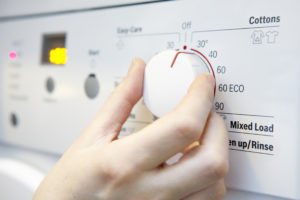
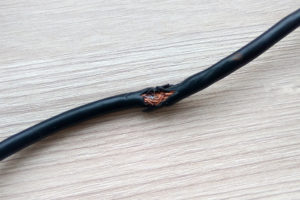
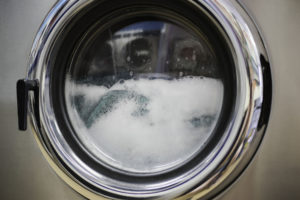 saves you a deluge if your machine suddenly has drainage problem. If you have kids, it also saves you a flooded floor should curious fingers open the door while in use.
saves you a deluge if your machine suddenly has drainage problem. If you have kids, it also saves you a flooded floor should curious fingers open the door while in use.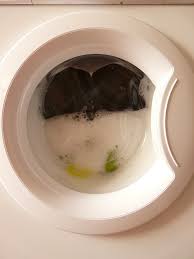 It has been one of those crazy days at the office. Then you rush to the shops, managing to arrive just before they close. Naturally, Murphy kicks in with his law again and you hit a traffic jam on the way back. You finally get home. But, just as you’re carrying in the groceries… what the…? Water all over the floor. Great. Just what you need – your washer dryer is leaking.
It has been one of those crazy days at the office. Then you rush to the shops, managing to arrive just before they close. Naturally, Murphy kicks in with his law again and you hit a traffic jam on the way back. You finally get home. But, just as you’re carrying in the groceries… what the…? Water all over the floor. Great. Just what you need – your washer dryer is leaking.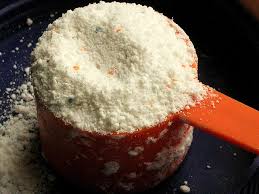 Although we all have budgets, you should try to avoid cheap, low-quality detergents, since they are prone to over-foaming. Penny-wise, pound-foolish and all that. You’re unlikely to be happy to have saved 40p on the washing load when you’ve just soaked Nana’s priceless Persian carpet. In the long run, with detergent as with all things, you get what you pay for. Low-cost detergent may also build up in your clothes and in the plumbing of the washing machine itself, causing more problems down the line.
Although we all have budgets, you should try to avoid cheap, low-quality detergents, since they are prone to over-foaming. Penny-wise, pound-foolish and all that. You’re unlikely to be happy to have saved 40p on the washing load when you’ve just soaked Nana’s priceless Persian carpet. In the long run, with detergent as with all things, you get what you pay for. Low-cost detergent may also build up in your clothes and in the plumbing of the washing machine itself, causing more problems down the line.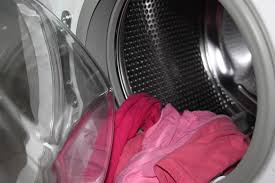 There is a variety of types of hoses used in a standard washing machine. But the most common are the ones that connect your water supply (fill hose) to the water inlet valve and the hose that drains the water from your washer. You will find the inlet water valve hose at the back of your washer (usually). It controls the entry of hot and cold water into your machine. If you notice that the leakage occurs primarily when the tub is being filled, the fill hose may be the culprit.
There is a variety of types of hoses used in a standard washing machine. But the most common are the ones that connect your water supply (fill hose) to the water inlet valve and the hose that drains the water from your washer. You will find the inlet water valve hose at the back of your washer (usually). It controls the entry of hot and cold water into your machine. If you notice that the leakage occurs primarily when the tub is being filled, the fill hose may be the culprit.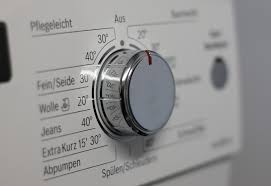 The water pump pumps water down the drain. Essentially, it drains the water from the tub of the machine. It can be belt-driven, direct drive or it could be a completely separate electric pump. It will have an outlet and an inlet pipe. If the leak occurs during the wash and/or drain cycle, it is likely that the water pump is your problem. The problem could be in either of the hoses; for example, the hoses connected to the pump could be loose because the thread on the fitting that tightens the hose to the machine is stripped, or the actual hose could be worn (nearly all waterproof substances are prone to weathering, either due to movement, pressure, or even the friction of whatever is being carried through the pipe).
The water pump pumps water down the drain. Essentially, it drains the water from the tub of the machine. It can be belt-driven, direct drive or it could be a completely separate electric pump. It will have an outlet and an inlet pipe. If the leak occurs during the wash and/or drain cycle, it is likely that the water pump is your problem. The problem could be in either of the hoses; for example, the hoses connected to the pump could be loose because the thread on the fitting that tightens the hose to the machine is stripped, or the actual hose could be worn (nearly all waterproof substances are prone to weathering, either due to movement, pressure, or even the friction of whatever is being carried through the pipe).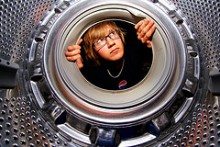
 Missing socks. How is that you put two in and only one ever comes out?! Some swear that socks that go missing from your washing machine turn into Tupperware lids. Which, of course, makes perfect sense.
Missing socks. How is that you put two in and only one ever comes out?! Some swear that socks that go missing from your washing machine turn into Tupperware lids. Which, of course, makes perfect sense.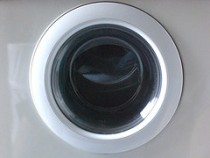
 The washing machine is one of the most used domestic appliances in any home. However, it may develop an internal problem at any time and display an error code. The error code indicates a technical fault, and to prevent any further damage the washing machine will either fail to start or abort the wash cycle.
The washing machine is one of the most used domestic appliances in any home. However, it may develop an internal problem at any time and display an error code. The error code indicates a technical fault, and to prevent any further damage the washing machine will either fail to start or abort the wash cycle.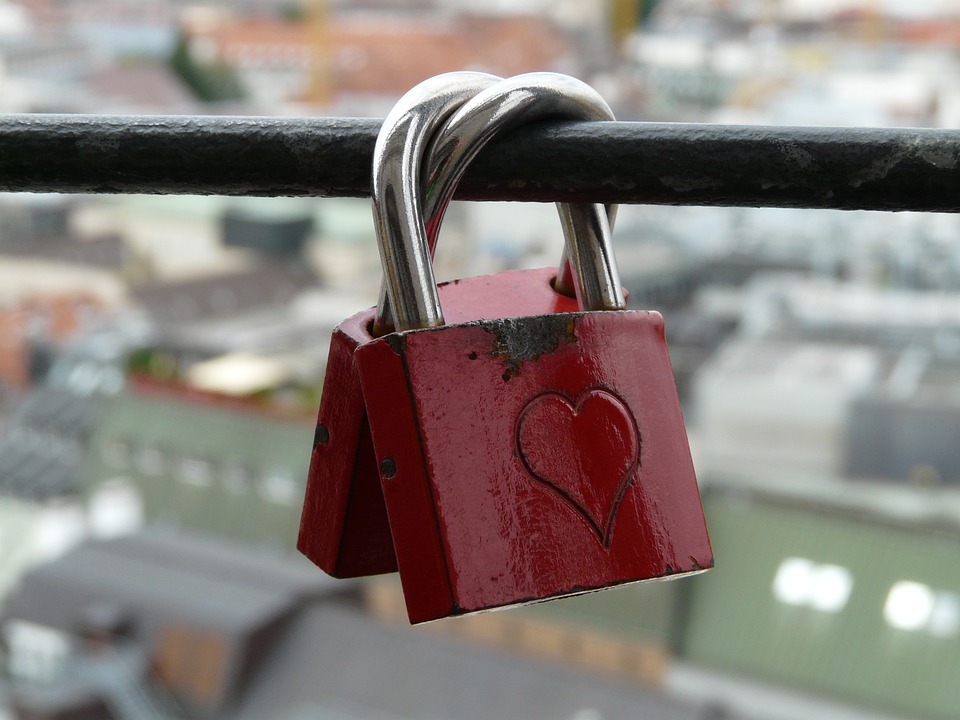 Child locks in dryers have two purposes really – they lock the door of the machine which prevents any child climbing into the drum and accidentally locking themselves in when the machine is out of action. The second purpose is to stop a little one – or anyone else for that matter – changing the dials when the machine is in full flow on a spin cycle.
Child locks in dryers have two purposes really – they lock the door of the machine which prevents any child climbing into the drum and accidentally locking themselves in when the machine is out of action. The second purpose is to stop a little one – or anyone else for that matter – changing the dials when the machine is in full flow on a spin cycle.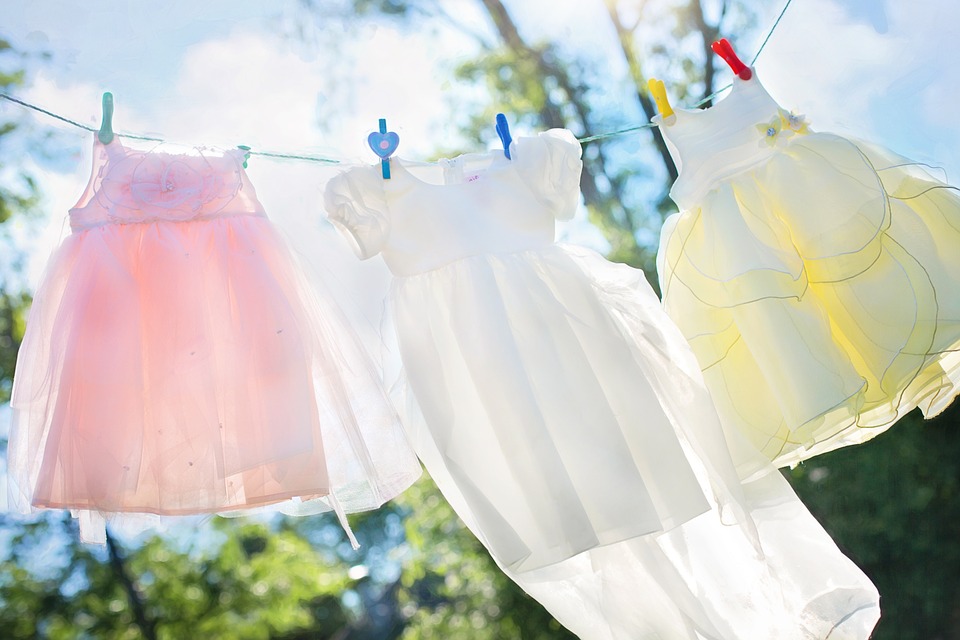 When it comes to the day-to-day functioning of the bigger white goods in your kitchen, your washer dryer is unfortunately the item most likely to stop working, burst a leak or become blocked.
When it comes to the day-to-day functioning of the bigger white goods in your kitchen, your washer dryer is unfortunately the item most likely to stop working, burst a leak or become blocked.